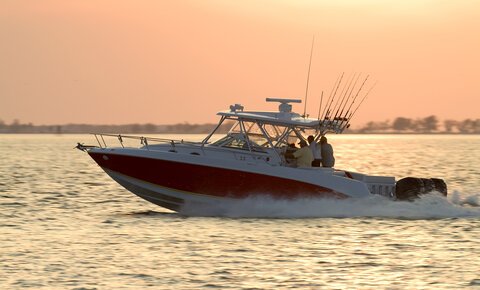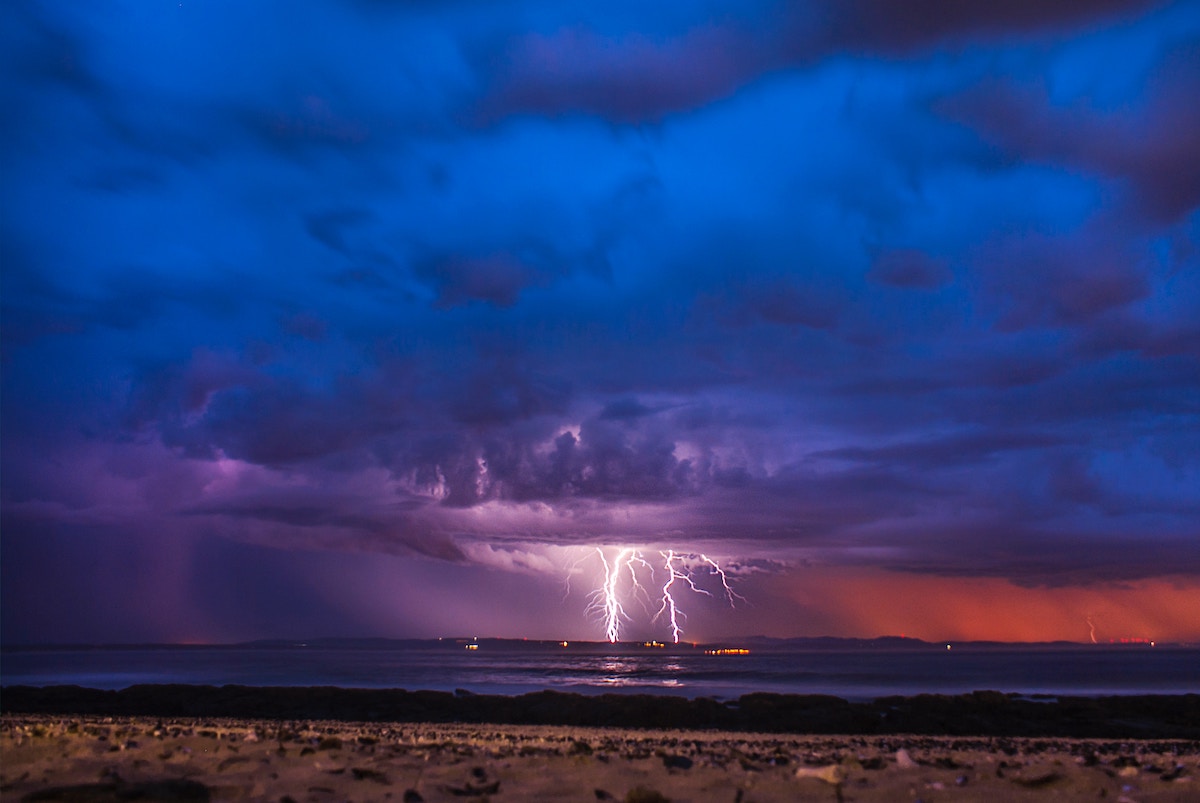Because of the sun and moon's gravitational pull, oceans, rivers, and lakes are in constant motion. Therefore, it's not uncommon for boaters to navigate various water levels in a single boating adventure!
Understanding tides is something every boater should know, as it's necessary for a safe and enjoyable experience on the water. If you aren't sure where to begin, we're covering everything you need to know about tides for boating down below.
Types of Tides
Tides refer to the rising and falling of sea levels according to the sun and moon's gravitational pull. Here's a quick overview of the most common types of tides:
1. High Tides
As the name suggests, high tides occur when the water level is at its highest. Boating during high tide is always fun, as there's plenty of water to navigate within, and it's easy to avoid obstacles.
2. Low Tides
The opposite of high tides, low tides mean the water is at its lowest. It's important to be extra careful when boating during low tide, as the water is shallower. Therefore, it's easier to hit obstacles lurking beneath the surface.
3. Incoming Tides
An incoming tide means the tide is approaching the shoreline – moving from low to high tide.
4. Outgoing Tides
Opposite of incoming tides, outgoing tides describe the water moving away from the shoreline – transitioning from high to low tide.
5. Slack Tides
Slack tides refer to the short period between incoming and outgoing tides. At this point, the current is at its weakest.
6. Neap Tides
Neap tides occur during the first and third quarters of the moon's phases. During these phases, the sun and moon become perpendicular to one another, weakening their gravitational pull. Therefore, the difference between high and low tide is less dramatic.
7. Spring Tides
Unlike the name, spring tides have nothing to do with the spring season. Instead, they happen during the full and new moon phases. At this time, during the moon's cycle, the Earth, sun, and moon all align on the same plane. This phenomenon creates a stronger gravitational pull, causing the difference between high and low tides to become exceptionally large.
Understanding Tidal Currents
Tidal currents occur alongside the rising and falling of the tides. Essentially, the vertical motion of the tides causes the water to move horizontally and create currents. When a tidal current moves toward the land, it is said to "flood." And when the current moves toward the sea, it "ebbs."
Like tides, tidal currents are affected by the moon's different phases. When the moon is full or new, tidal currents are strong (called "spring currents"). And when the mood is in the first or third quarter phase, the currents are weaker (called "neap currents").
How Tides Affect Boat Handling
Most coastal areas experience two high tides over 24 hours. They occur 12 hours and 25 minutes apart – taking approximately six hours for the water to transition from high to low tide (or vice versa).
Here's how the changing tides and currents affect boat handling:
Docking
When you prepare to dock your boat, you need to keep the tides in mind. Docking is easiest during slack tide, as the minimal water movement is ideal (as long as the wind isn't strong).
Docking during high tide minimizes the risk of running aground, as you have more water to work with. However, the increased water level can make some boat docks more challenging to access.
On the other hand, docking during low tide increases the risk of hitting underwater obstacles. Additionally, your boat's draft (the distance between the waterline and the deepest point of your vessel) might pose an additional challenge.
Read Next: How to Dock Your Boat
Beaching
Beaching your boat for a family picnic at a local island or sandbar? Make sure to check the tide conditions beforehand! As you can imagine, it is easiest to reach the shore during high tide. But if you stay too long, you risk getting stuck during low tide.
Launching
We always recommend planning your boating arrivals and departures around the tides. Try to enter and leave the marina during high tide, as it generally offers the smoothest sailing and docking opportunities.
Read Next: How to Launch a Boat
Cruising
The greater the separation between low and high tides, the faster the current will be. Keep a reliable tide chart handy to ensure smooth sailing!
Tides for Boating
As you now know, understanding tides is essential boating knowledge. The changing tides impact every aspect of your boating journey – from launch to docking and everything in between Therefore, we hope that today's article can serve as a helpful guide for your next on-the-water excursion.
Are you interested in more boating resources and tips? Check out our website's Articles & Inspiration section for more boating blog posts!


